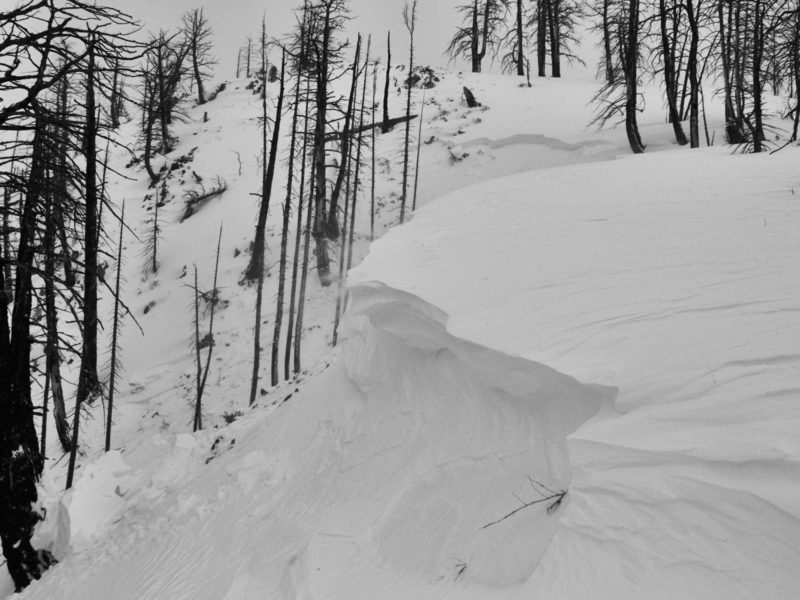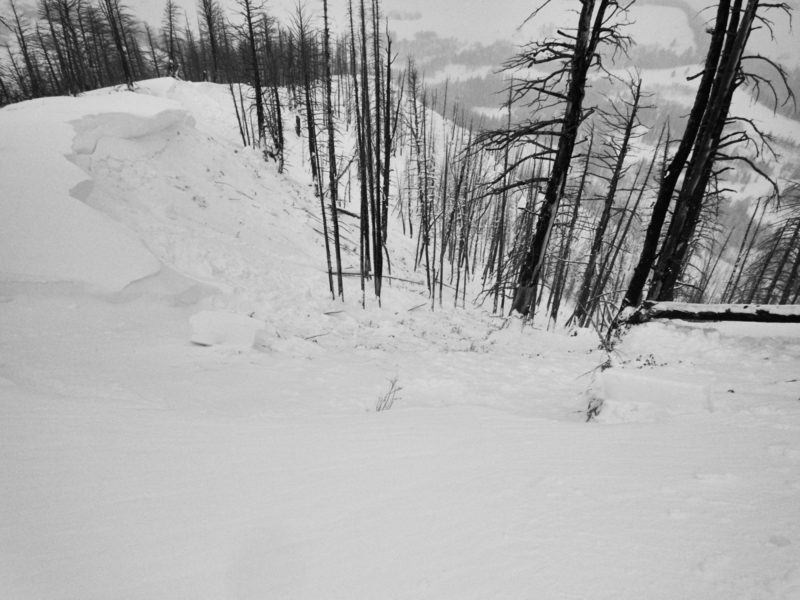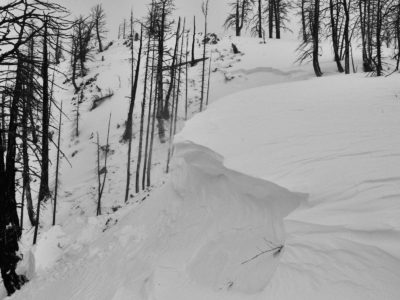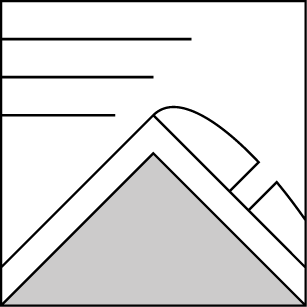Basic Information
Observation Details
Observation Date:
January 13, 2020Submitted:
January 14, 2020Observer:
SAC - VandenBosZone or Region:
Galena Summit and Eastern MtnsLocation:
4th of July CreekSigns of Unstable Snow
Recent Avalanches?
YesCracking?
WidespreadCollapsing?
WidespreadSnow Stability
Stability Rating:
PoorConfidence in Rating:
HighStability Trend:
SteadyBottom Line
Weak layers in snowpack are being pushed towards their breaking points. In areas with the right terrain characteristics, large triggers are capable of producing large avalanches involving the entire season's snowpack.
Media/Attachments


Advanced Information
Weather Summary
Cloud Cover:
OvercastWind:
Moderate , WAfternoon weather obs. Broken to overcast skies, occasional periods of S-1 precip with no significant precipitation. Light to moderate westerly winds blowing at highway level and along ridges in exposed middle elevation terrain - calm otherwise.
Avalanche Observations
| # | Date | Location | Size | Type | Bed Sfc | Depth | Trigger | Comments | Photo |
|---|---|---|---|---|---|---|---|---|---|
| 1 |
4th of July Creek drainage NE 8,600 |
D2 | HS | O-Old Snow | 50-90cm | N-Natural | Failed on facets 10-15cm off ground. Hard to be certain if there was snow on this slope prior to Thanksgiving storms, but I think there probably was. However, facets/DH at and below failure interface were fairly small (to 4mm), which seems on the small side for 11/26. No SH found at this interface. If I had to bet I'd say 11/26 was the culprit. |

|
Snowpack Observations
Snowpack seems to be close to its breaking point where thin. Slide observed was triggered by a sizable cornice collapse, pointing to the need for a large trigger in current snowpack conformation.
Avalanche Problems
| Problem | Location | Distribution | Sensitivity | Size | Comments |
|---|---|---|---|---|---|
 Wind Slab
Wind Slab
|
|
Comments: Wind slabs existed in an isolated to widespread distribution in most of the terrain that I traveled through. |
|||
 Persistent Slab
Persistent Slab
|
|
Layer Depth/Date: 11/26 and 12/7 |
